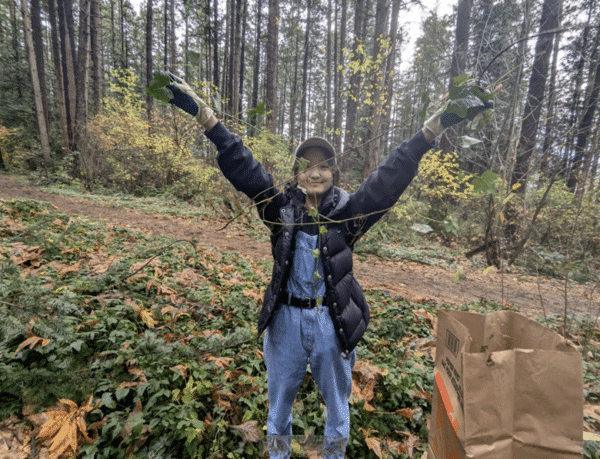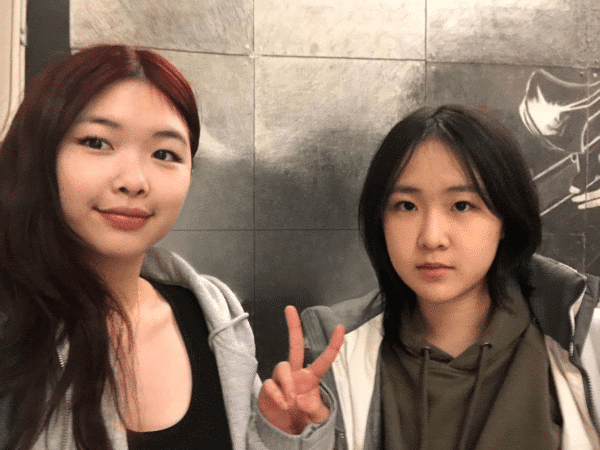By Alex Mutch| June 12, 2024
Sometimes invasive species hide right before your eyes. If you see them often enough, you might not realize they are invasive.
Making this distinction can be more difficult when you are also new to an area. One of our youth members in B.C. was certainly caught off guard!

Sally Liu moved to Canada when she was 10 years old. She became immersed in the abundant nature and biodiversity that surrounded her home on Vancouver Island, sparking a lifelong passion for learning about the earth and its myriads of species. As a student at UBC, Salley enjoyed watching the variety of squirrels that reside on campus: the reddish-brown douglas squirrel with a white eye ring, the eastern grey squirrel (Sciurus carolinensis) with its black-grey fur colour and white belly, and the eastern grey squirrel with black colouration.
But, during one of her geography classes, Sally was in for a shock. She learned that the squirrels she had grown up observing were invasive and had been introduced by human activity. After closely observing native douglas squirrels on UBC’s campus, Sally realized that eastern grey squirrels were more numerous, larger, and healthier than the native douglas squirrels. Both variants of the eastern grey squirrel are invasive and outcompete native douglas squirrels.
Sally took this experience to heart – since she was unaware these squirrels were invasive, she knew others must also be unaware. Through the help of ISCBC, she made it her goal to change that, creating posters which display common invasive plants and animals readily found in B.C. Her posters raise awareness that just because an invasive species is common in an area – and you might think it has always been part of the environment – doesn’t mean it belongs.

We asked Sally what advice she would give to someone who was interested in getting involved in invasive species management.
“If you want to get involved in invasive species management, begin small by familiarizing yourself with the local invasive species around you. Identifying and understanding the background of those non-native plants and animal species is a great way to get started. You do not need any academic knowledge to take action, you can always take advantage of free educational resources available online or ask a coordinator within your volunteer program. Hands-on projects such as invasive species removal or native species restoration will help you gain more practical experience.”

Funded by the Government of Canada.
Financé par le gouvernement du Canada.
Alex Mutch is a youth engagement coordinator at ISCBC. He values inclusivity and strives to create equitable and inviting environments in all the communities he is a part of. In his spare time, Alex enjoys playing volleyball, hiking, reading, and solving Rubik’s cubes. You can reach Alex at amutch@bcinvasives.ca.
Share


















